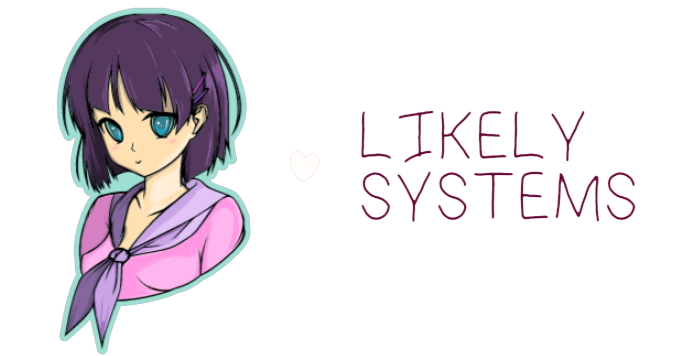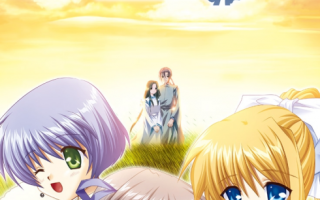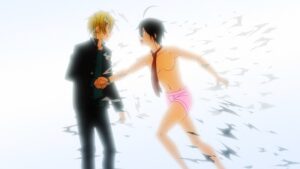Back in June of 2010, when I was in my junior year of high school, Anime News Network announced that they would be streaming an old series from 1977 called Ie Naki Ko, or Nobody’s Boy Remi, alongside many other shows. ANN would put up five subbed episodes every week, and it was their first license directly from Japan. Back then, I was still forging my tastes in anime, but thought this seemed interesting, as its premise reminded me a bit of Les Miserables Shoujo Cosette. Let me tell you, I was hooked from the first episode, and absolutely DEVOURED this series every time episodes were dropped each week. It really struck a chord with 16/17-year-old me. Sadly, ANN is no longer streaming Remi, or anything else. I didn’t learn of the existing home video release it had until much later, and by then it was long out of print. Luckily, fansubs were easy to come by, and in 2025, AnimEigo (The new iteration of it, that is) released it on blu-ray. I bought that blu-ray set as soon as the MediaOCD store got early copies in. Seriously, rewatching this show has been a really sobering experience in the best way possible, and I still love it now as a 32-year-old adult woman as I did back when I was in high school. I previously reviewed it on MAL back in 2010, but honestly, that review was one of my first attempts at seriously reviewing/critiquing something, and re-reading it…yeah, it’s rather slipshod and overly gushy and fangirly, so I’m rewriting my review from scratch so it’ll be up to par with my current stuff.
Based on the 1878 French novel Sans Famille by Hector Malot, the story centers on an eight-year-old boy, Remi Barberin, who lives a happy life in the tiny French village of Chavanon with his mother. His father, Jerome, is away at work, so he does his best to help his mother run the house. When Jerome is suddenly dismissed from service due to a work injury and returns, Remi is in for a shock—Jerome scathingly reveals to him that he is not their biological child, and has no obligation to keep him. In spite of his mother’s protests, Jerome drags Remi away and sells him because he’s in dire need of money. Remi is purchased by a circus performer named Vitalis, accompanied by his three dogs Capi, Zerbino, and Dolce, and a monkey, Joli-Coeur. To his surprise, Vitalis turns out to be the kindest and warmest father figure he’s ever had in his life. He teaches Remi how to read and write, dotes on him to no end, and disciplines him when needed. Remi becomes part of the Signor Vitalis Troupe and they hold shows all over France, with Remi becoming an expert performer under his new adoptive father’s tutelage. As Remi crosses paths with many enigmatic people both cruel and kind, including a feisty violinist named Mattia, a former student of Vitalis named Marcano, a cruel caretaker named Garofoli, an unscrupulous gang known as the Driscolls, the working class Acquin family, and the aristocratic Milligan family, he strives for one thing: to find his true family.
At this point, I haven’t read the original novel, so I can’t comment on the show’s faithfulness to the source material, but from what I’ve heard from other sources, this series is noted to be pretty faithful, albeit with several significant changes. It helps that with the series being 51 episodes long, it makes optimal use of its time to flesh out the story and characters, resulting in a series that is pretty well-paced for a show of its era. It probably expands on a lot of events and characters too, for all I know. I need to get around to finding an English translation of the novel some time, if I can find one. Oh, and I should probably warn you that if you ever plan on watching this, let me tell you, Remi is dark. Remi has to deal with being sold off by his adopted dad, having several friends die undignified deaths, facing abject poverty, hunger, wild conspiracies, and so on. Don’t worry, it’s not dark to the level of, say, Magical Girl Site or Platinum End, where everything is completely mired in misery porn. I’d argue Remi’s level of darkness is akin to Digimon Tamers or the Fuga: Melodies of Steel games, having its dark moments be appropriately serious, but still having plenty of levity and humorous moments when needed, so it’s not all doom and gloom. But the drama in the series is pretty immense, and you have to be able to tolerate some level of 70s melodrama if you want to enjoy this series.
But simply dismissing Remi as a dark children’s anime would be doing it a massive disservice, as there’s so much about Remi as a show that really allows it to shine, starting from its animation. For a show that was made in 1977, it had a pretty high budget for that time period. We all know that Osamu Dezaki, who directed this, really loved experimenting with all sorts of animation techniques, often on a tight budget, from his favorite elaborately drawn freeze frames to having certain scenes repeat several times in a row. The actual animation is almost theatrical quality, which is rare for a 51-episode series like Remi. Backgrounds are immaculately painted, really capturing both the pastoral countryside and the dirt and grime of the cities and slums. Actual character motion is snappy and smooth, sometimes deliberately jerky or slow depending on the scene and context, and because Dezaki and his team made constant use of multi-plane animation, pioneered by Disney in the 1930s but seldom used in anime at that point, everything is constantly moving even when there’s very little animation.
But the anime has a unique style all its own when it decides to go all-out with surrealist imagery and psychedelica, usually used to show how a child Remi’s age views a world that he has no frame of reference for. Colors are more vivid, dangers look more menacing, and strange things are downright creepy. Speaking of the backgrounds (Courtesy of art director Shichiro Kobayashi of Angel’s Egg, Utena, and 90s Berserk fame. Yes, really), the layered backgrounds aren’t just to give Remi its unique look, as I recently learned that Remi was actually the first and only anime series made to be viewed in 3D. But not the type of 3D you’re thinking of with the red and blue 3D glasses. There’s this concept called the Pulfrich effect, a weird optical illusion involving the different processing times between both eyes, induced by dimming one eye, resulting in anything that moves horizontally given the illusion of depth, which is why the multi-plane animation is used. Copies ordered from the MediaOCD website contain specialized 3D glasses that you can wear and see this in effect, if you want. Not sure if I recommend watching the entire series like this.
The soundtrack is also pretty good, if a bit dated, and it leans much more into the series’ French setting, with a lot of accordions, strings, and percussion. Given that the music is done by Takeo Watanabe, who previously made the scores for anime such as Heidi, Dog of Flanders, Candy Candy, Rascal, and Perrine Monogatari, he definitely manages to bring his experience here, knowing how to utilize the different sounds and instruments to achieve their intended effects, and it works really well here. The opening theme is nice, though I do feel the ending theme is a bit too peppy and overly cutesy for the series considering the show’s tone is much darker than it, which results in quite a bit of mood whiplash at times. There are times when the voice acting can lean a bit too theatrical, but I never found it to be too annoying. All the voice actors do great in their respective roles. It is kinda funny learning that the late Masako Sugaya, who would go on to play Uran in the 1980 Astro Boy anime, a character who I’ve made no secret of the fact that I don’t like, voices Remi here with the exact same tone of voice.
Speaking of the characters, let’s talk about them! Remi as a series has no shortage of characters to follow, even if the main cast is relatively small, especially for a 51-episode series. If you ask me, all of them are wonderfully well-written and developed, constantly evolving as the show goes on, and are consistently engaging throughout. Even characters you don’t expect to receive much in the way of personality, such as Vitalis’ dogs, are given unique strengths and flaws that are used wonderfully. One example of this is Zerbino, a dog who steals food on a regular basis. His actions create a lot of tension throughout the series, and it forces Remi, Capi, and Vitalis to really develop and grow up when trying to deal with him. Not to mention that Zerbino’s gluttony results in a pretty significant event, which I won’t spoil. Remi himself starts out as a naive, sheltered 8-year-old dealt a bad hand, and in my opinion, his growth and development is easily the best part of the series. We get to see Remi grow and mature into a more responsible, well-rounded person thanks to Vitalis and all the people he encounters throughout his life, even when things are at their bleakest. It’s especially noticeable when you compare how he was with Vitalis in the first series to his interactions with the street urchin Mattia, who joins him in the second half. Actually, one big change the anime made compared to the novel is Mattia’s characterization. In the book, Mattia was a more passive, weak-willed character, and the anime decided to completely change his characterization, making him more of a scrappy, sassy, intelligent Artful Dodger-type kid. I haven’t read the novel yet, but I do think this was a good move, as Mattia’s different personality from Remi allows them to have a fun dynamic and stronger chemistry with one another.
Remi is a story that doesn’t pull its punches when it comes to its themes, exploring the highs and lows of what life could be like for traveling entertainers in 19th century France, from things like police brutality to showing how prejudice can affect those on the receiving end. Unlike most sad stories nowadays, which seem to revel in their misery and milk it for all its worth when they don’t need to, Remi’s treatment of its themes and overarching messages comes through better, done with subtlety, never resorting to beating you over the head with them, even if the acting and Dezaki’s usual stylizations can make it seem more theatrical than it should. Granted, I did learn recently that the ending is drastically different from that of the book, which supposedly misses the point that Malot was trying to make in the original. Again, I haven’t read the book yet, but I’m honestly not sure why Dezaki and his team decided to change the ending. There’s also one instance where a 1976 roadmap is used in the series, which is really weird when your series takes place in 19th century France.
However, for all that I praise Nobody’s Boy Remi, it does have a pretty big flaw, and my feelings on it are the same now as they were back when I first watched it: The narrator. Good God, this damn narrator just won’t shut up! Seriously, this narrator goes on and on and on in just about every episode, from voicing Remi’s thoughts, to describing the geography of France, to, most egregiously, spoiling big reveals and plot twists before they’re set to actually happen in the show! Granted, I do feel Lady Georgie‘s narrator is much worse in this regard, in that the narrator in that show was much more obvious in spelling out the characters’ feelings and thoughts in a way that came off as really condescending to its audience, like the show felt it couldn’t trust its audience to remember what happened literally seconds ago. That said, the narrator in this show is still really annoying in how much talking time he takes up compared to the characters in the show. Seriously, show, trust your damn audience!! Thankfully, Osamu Dezaki and his team seemed to realize this, as when they went to work on Treasure Island after Remi wrapped up, the narration was significantly dialed back, and the few times there was narration mainly consisted of just Jim voicing his own thoughts.
But you know what? After all this time, I’m so glad Nobody’s Boy Remi is coming back into the limelight, and we all have Justin Sevakis to thank for it. I don’t know what kind of person I’d be now if I hadn’t seen Remi on ANN back in 2010, and I don’t want to even imagine it. It’s a well-crafted anime that absolutely resonates as much now as it did 48 years ago, and honestly, I wish more anime like this were made these days, because there’s a startling amount of people who think “Why would anybody want to watch anime that’s super depressing? We don’t need that downer stuff nowadays, we need more happy, wholesome, and uplifting stuff!” To that I say, if you don’t like sad anime, that’s fine, you don’t have to watch it, and your reasons for refusing are valid. However, to simply dismiss shows like Remi as just “child suffering fodder” is doing them a massive disservice. I don’t watch shows like Remi because I enjoy watching animated children suffer. I watch them because they’re amazingly crafted, made by people who have care and passion for what they’re working on, and actually care about stuff like character development and intelligent storytelling while respecting its child audience. It’s honestly both sad and kinda disturbing to me that people are treating anime that are even a little bit sad, uncomfortable, or disturbing like some kind of radioactive substance. Hell, Remi’s whole message is about overcoming impossible odds and not losing yourself no matter how bad things get, and really, shouldn’t that be what we need now, in these troubled times we’re living in? Seriously, this new purity culture we’re living in is starting to get ridiculous. I mean, we’re living in an era where people are not only actively campaigning but actively erasing literally any LGBT media or history ever just because they don’t want it to exist. So yeah, Nobody’s Boy Remi is one of my favorite anime ever (And I love the 1997 version just as much), it’s still just as good now as it was when I watched it at 17. If you want a genuinely awesome show that won’t pull its punches, give Remi a shot, especially now that AnimEigo’s blu-ray is out.
The post Guest Post: Unearthed Treasures with Firechick: Nobody’s Boy Remi (94/100) appeared first on Star Crossed Anime.




